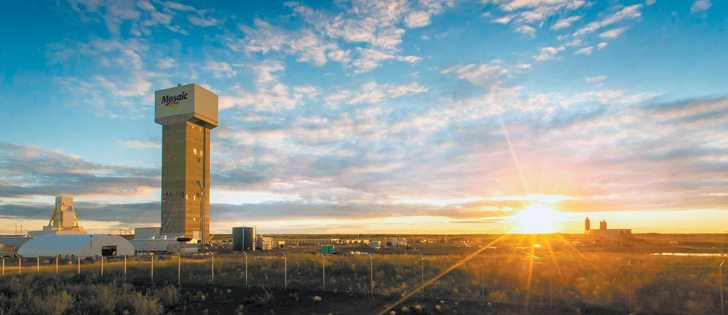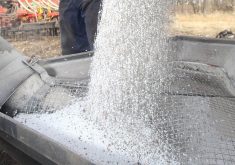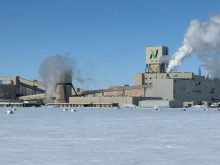Official says the Esterhazy K3 mine expansion is an effort to keep ahead of the competition
Mosaic Co. has announced a $1.7 billion investment in its K3 mine at Esterhazy, Sask.
The spending comes on top of $1.5 billion announced in 2009 when the first stage of the project was ap-proved.
Walt Precourt, senior vice-president of potash, said the company’s board of directors had spent the last year analyzing the project and how it could be further developed.
“Now is the time in, our opinion, to invest in Saskatchewan,” he told reporters.
“At times, when others sometimes pull back, you see opportunity and that’s what got us to the decision today.”
Read Also

Farming Smarter receives financial boost from Alberta government for potato research
Farming Smarter near Lethbridge got a boost to its research equipment, thanks to the Alberta government’s increase in funding for research associations.
The additional investment will accelerate plans for increased production over the next eight years. K3 is expected to begin mining potash ore in late 2017.
Ore from K1 and K2 will also be fed into existing mills, Precourt said.
He said potash prices have softened a bit, which stretches the company’s investment dollar. More workers are also available.
There will be more than 300 construction jobs throughout the project, plus all the spinoffs in service and support. Precourt said the company will spend $300 to $400 million on equipment that many Sask-atchewan companies will likely bid on.
The Esterhazy mine was the first in Saskatchewan and is the world’s largest.
“This is our home,” Precourt said.
He said the company’s 50-year-old roots in the province were a factor in the decision to expand because the long-standing presence provides insight into when to expand.
Premier Brad Wall thanked the company for its continued commitment to the province, including establishing its head office in Regina.
He said total capital investment by all potash companies since 2007 has been more than $17 billion, and the number of full-time employees in potash mines after construction has gone up by 42 percent to nearly 5,000 people.
“The potash industry has played a starring role in the growth story that is our provincial economy,” he said.
“In fact, the potash industry, along with our thriving agricultural sector, will see us through some uncertain times with respect to the energy sector.”
Precourt said the province has created an investor friendly climate, but he declined to comment on where potash prices are headed or the province’s royalty structure.
The K3 mine will add at least 900,000 tonnes of capability at the site, according to the company’s prior announcements.
“Right now we’re not announcing how much additional capability will be there because we learned in our Canpotex proving run, or capacity run, we did a year ago that we have some unharnessed capability. We’re still analyzing,” Precourt said.
When asked about the potential for over-production, he said all commodities go through cycles.
“You can either choose to let your competitors set the environment or you can chart a path forward and set it yourself.”
Contact karen.briere@producer.com


















